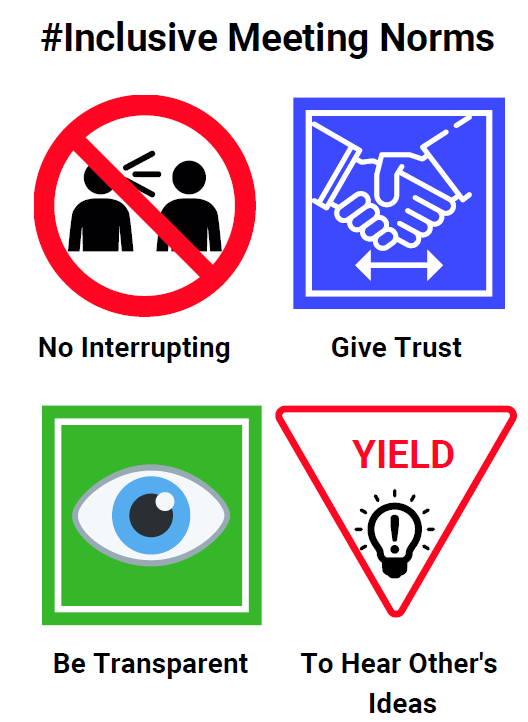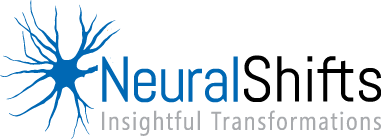Diversity and inclusion are key to making employees at all levels of an organization feel valued and heard. Unfortunately, many organizations think they are encouraging inclusion when in reality, their practices encourage exclusion daily. This is often due to unconscious thought patterns and the imbalance of power within an organizational structure. Imbalance of power fosters inequities between employees that interfere in many scenarios, including business meetings.
Train Facilitators and Participants to Create Inclusive Meeting Environments.
People come to meetings to collaborate. However, power struggles emerge based on the organizational structure as well as the relationships between employees at different levels.
Power might stem from knowledge, information asymmetries, and organizational status. As a result, some people who have more power end up with more leading to the exclusion of others.
To drive equity within organizations, managers need to focus on curbing exclusion within meetings. The goals of an inclusive meeting are to utilize the diversity of thought in the room fully and to not allow power dynamics to stifle idea sharing.
How do you change your meeting culture?
From a survey we conducted on behavior and inclusive meetings, two key factors emerged:
⦁ Inclusive meetings have a clear agenda.
⦁ Inclusive meetings provide a high level of psychological safety for people to speak up and disagree.
With these critical factors in mind, the meeting facilitator and participants can take concrete action to foster inclusion during meetings.
The facilitator should implement the following six practices:
- The Agenda: Create a clear agenda and set of objectives for the meeting. When we think ahead, it leads to clarity in what the discussion should look like and who needs to participate.
- Accessibility Enable video technology, use polling, conduct Q&As, and use a virtual whiteboard for remote employees. These tools can help make sure everyone is equally able to contribute.
- Rules of Engagement: Establish clear rules of engagement for people to feel safe and fully contribute to the meeting. Ask, what do you need to feel safe in this meeting? & How can we be held accountable for upholding these agreements?
- Role Assignment: Assign key roles for the meeting: a facilitator to keep the session on track, an action tracker to record action items, and a team meeting ambassador to support and ensure remote employees have a voice.
- Equal Participation: Ensure that all participants have an equal amount of time to participate and be heard.
- Meeting Evaluation: Provide a meeting evaluation to participants to determine an Inclusive score. This will provide an understanding of the employees’ perspectives and guidance for future meetings. Set an anonymous poll on skype or teams and ask: “How inclusive was the meeting?” You can’t change what you don’t measure. Establishingfor real progress.
Who Should Be Invited?
You also want to clarify why you think an individual should participate. Ask the following questions to create your invite list:
- Does the individual have a unique perspective or specialized knowledge of the subject matter?
- Is the individual responsible for making a decision
- Does the individual have the ability to influence other’s opinions on the matter?
The 8-18-1800 Rule for Meeting Invites
To promote inclusion, only invite those who are essential to attend. When deciding how many people to ask to a meeting, follow the 8-18-1800 rule as outlined in the Harvard Business Review:
- Invite no more than 8 people if the goal is to make a decision or solve a problem.
- If your goal is to brainstorm, you can invite up to 18 people.
- If the goal is to share updates, invite all who need to be privy to the updates. However, limit the number of attendees to 18 if everyone will be providing an update.
- Invite 1,800 or more if your purpose is to rally the troops.
As a side note, if decision making is the goal of the meeting, the most effective way for a group to make decisions is to aggregate individual opinions. Ask each participant to vote anonymously, then compile and review the answers to come to a consensus or decision.
Considering the Needs of All Participants
Information provided to participants must fit their needs for communication. For example, pre-reading materials must be accessible in braille or auditory recordings if someone has a vision impairment and captioning capability must be provided for someone who is hearing impaired. You can visit Microsoft accessibility tools to learn more.
Disabilities are not the only individual factors to consider. For instance, if the meeting is about decision making, the facilitator should be mindful that introverts need more time to process before blurting out an answer. To encourage full participation of introverts, the facilitator needs to send meeting information in advance for the introvert to process.
Participants
Meeting participants need guidelines to follow as much as the leaders of the meeting do. Communicate expectations ahead of time with invitees. For effective participation and inclusion, the Participant’s Role is to:
- Inquire about his or her role in the meeting.
- Prepare himself or herself by reading the provided materials in advance.
- Decline the meeting invite when appropriate.
- Raise awareness if participants are interrupting others.
- Have an ally or serve as an ally to others during the meeting.
Let’s face it nobody changes overnight, so to create real change we need to support people in adopting the right behaviors with nudges that trigger automatic responses. After training employees on facilitating inclusive meetings, we run a campaign to reinforce the right inclusive meeting norms.
Follow-Up Campaign to Trigger the Right Behaviors
To control power dynamics and support inclusive meeting behavior, we implemented a poster campaign focused on behavior norms and expectations. The posters have key messages embedded in traffic signs to allow for quick recognition and interpretation of information. The behavior norms highlighted on the posters are:
- Do not interrupt [To circumvent gender bias, as women get more interrupted than men]
- Give trust
- Be transparent
- Yield to hear other’s ideas

®Neural Shifts All Rights Reserved 2019.
The posters generated conversations around inclusive meeting behavior and raise awareness of exclusionary behaviors during meetings.
Remember, exclusion happens because employees are invited to the table but not allowed to influence the decisions made or the outcomes of the meeting. Through our behavioral science practice, we’ve found that implementing these tools to run an inclusive meeting environment has a significant impact the organization’s culture bringing awareness to behaviors that work for and against inclusion.
References
- https://hbr.org/2015/03/how-to-know-if-there-are-too-many-people-in-your-meeting
- The Secret Power Of Introverts: https://www.forbes.com/sites/jennagoudreau/2012/01/26/the-secret-power-of-introverts/#25503ea37cdf
- What is nudging: https://behavioralpolicy.org/what-is-nudging/
- How “https://ideas.ted.com/how-do-you-get-from-diversity-to-inclusion-ask-these-4-questions-about-your-meetings/
- “Creating psychological safety at work: https://hbr.org/ideacast/2019/01/creating-psychological-safety-in-the-workplace




0 Comments